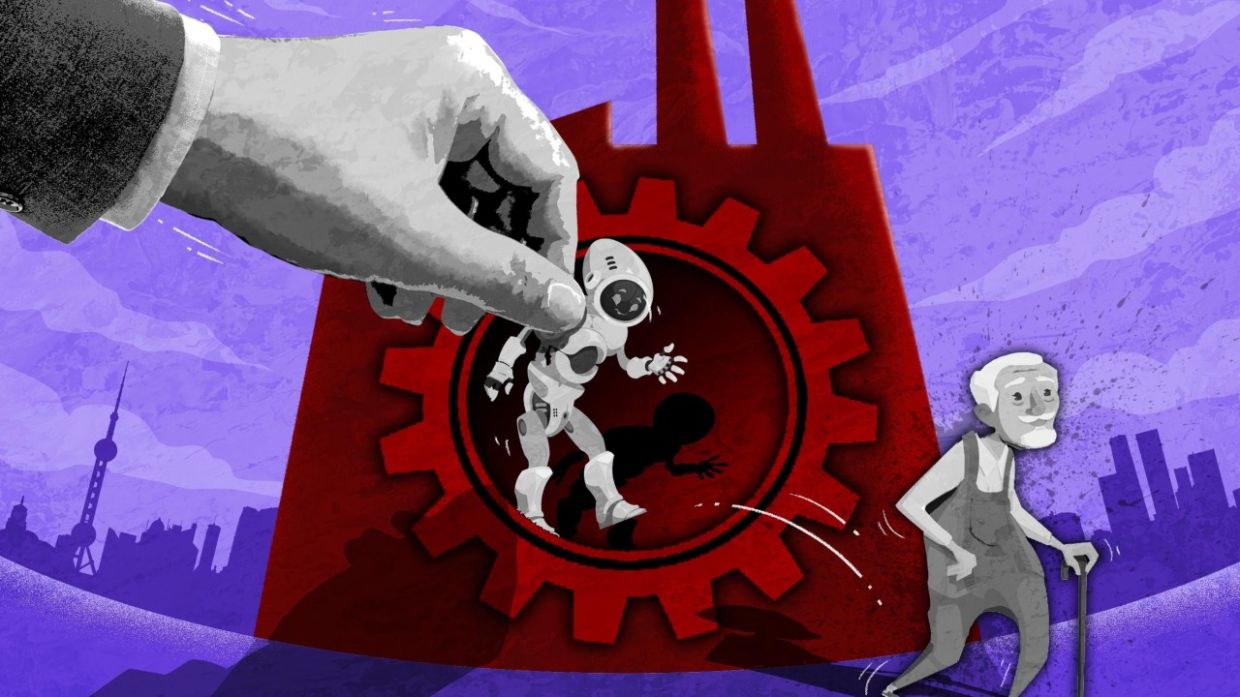As population declines and labour force shrinks, Chinese businessmen, in their search for a young workforce, are finding in robots potential answers to speed up manufacturing activities all along undertaking cost cutting exercises.
At the time when the economic slowdown has impacted all sectors in China, the move towards robotisation of the production system is proving as an icing on the cake for the businessmen in the country. Labour-intensive industries like textile, apparel, footwear, and household goods are making a swift transition to robotic production to keep labour costs steady and maximise gains, China Daily said.
Increase in productivity and efficiency across industries in China have led to high demands for robots in the country. According to China’s Ministry of Industry and Information Technology, as many as 281,515 units of industrial robots were produced in the first eight months of 2023 in the country, up 2.3% year on year, and had set up nearly 8,000 digital factories and smart manufacturing plants by July this year.
In China, robotics cover more than 60 industry categories and 206 subcategories, said a 2023 report by IResearch Services, a Shanghai-based research and consulting company. Electronics, automotive and semiconductors are the mainstay industries for the technology application, with lithium batteries, photovoltaics and aerospace emerging as stand-outs, South China Morning Post said.
By using advanced technology and undertaking smart manufacturing strategy, China aims to climb high on the industrial chain in the face of rising geopolitical complications and demographic changes.
In 2022, China’s working age population—those between 16 and 59–fell to 875.6 million from 896.4 million in 2019, while its population above 65 rose to 209.78 million in 2022 from 176 million in 2019, South China Morning Post said.
Quoting a demographic expert, the Hong Kong-based English newspaper said China’s working age population declined by an average of 0.14% annually from 2011-22, and that annual average decline would reach 0.83% between 2022 and 2035.
China witnessed a record-low number of births in 2022. It saw a 10% decline in the number of babies born last year. As per the data published by China’s National Health Commission, the country had just 9.56 million births—the lowest figure since records began in 1949.
Demographers worry that due to various factors, China may see further decline in its population in coming years. Moreover, China is feared to join the league of nations like Japan, South Korea, and Europe with a high percentage of the elderly population.
By 2033, as per National Health Commission, 400 million people, or over a third of China’s current population, are estimated to be above the age of 60. It will have a significant impact on China’s development, demographers feel.
The Journal of the China University of Labour Relations also maintained in 2021 that the aging population will lower China’s economic growth rate by an annual average of
1.07 percentage point from 2020 to 2025.
The country’s numero uno position as the world’s factory is already being challenged by emerging markets in South Asia and Southeast Asia. By putting robots in the lead role, it wants to maintain a robust industrial system and stay the course, China Daily said.
In the world, China’s robot density—the number of robotic units per 10,000 workers, is 392, while South Korea tops the chart in robot density with 1,000 units per 10,000 workers, followed by Singapore with 670, followed by Japan and Germany with close to 400, said the International Federation of Robotics.
iResearch services has predicted that the density of robots in the manufacturing sector in China will rise from 403 to 496 robots per 10,000 workers by 2025. However, China Daily said Beijing aims to double its robot density in the manufacturing sector and deploy over 100 applications and solutions for the technology by 2025.
Encouragement from the ruling Chinese Communist Party for robot adoption with generous subsidies, has been cited by Asia Times as the key reason for the rise in the use of robots in the manufacturing industry in the country.
Quoting data from China’s Ministry of Industry and Information Technology, the state- backed Xinhua news said China has become the world’s largest industrial robot market, with its annual installations of industrial robots accounting for more than half of the world’s total in 2022. With this, revenue generated by China’s robot making industry has also shown signs of gains.
According to China Daily, the operating revenue of the country’s robotics industry surpassed 170 billion yuan ($23.3 billion) in 2022. This indicates how fast the manufacturing sector has expanded its robotisation programme in China. Although automation or robotisation of the manufacturing industry will lead to an enhancement in productivity, in the long run, a shrinking population is more likely to have an extraordinary fall in human talent in China and with this, consequent impact on overall progress of the society, say some experts.

Leave a Reply